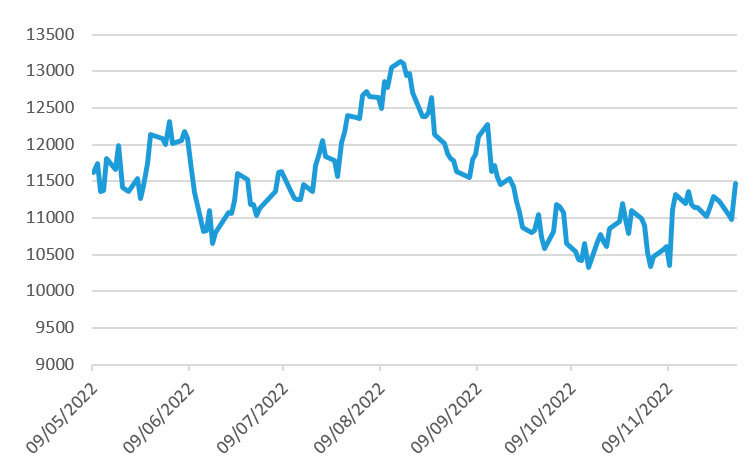Statements from the central banks and demonstrations in China have marked the end of the month
5 December de 2022

In November, most financial assets recorded gains for the second month in a row, boosted by the posting of the latest inflation figures (which surprised on the downside), and the temporary measures to relax the zero-COVID policy in China. With the improvement of the markets, we saw that the dollar recorded a strong devaluation, the largest monthly drop since September 2010.
1. Comments from the central bank
This past fortnight has been largely marked by the posting of the minutes of the central banks to see if any indication could be sensed to know what decision will be taken in upcoming meetings, plus the comments of their different members.
Thus we had the publication of the minutes of the Federal Reserve of the United States (the Fed), in which there was a hint of a possible start to a softening in the rate hikes. This was sustained in recent days with the appearance of the bank’s chairman, Jerome Powell, who clearly had a doveish tone; it showed that he is preparing a slowdown in the pace of rate hikes in December, although he made it clear that the entity will keep rates high in order to curb inflation. In addition, he was optimistic that he could prevent the US economy from entering a recession as a result of the tightening of monetary policy. The market interpreted Chairman Powell’s clear message and risk assets rose sharply, and we saw pullbacks in the Treasury.
As for the minutes of the European Central Bank, a less hawkish tone emerged, indicating that if the recession lasts for a long time and is a deep one, it would lead to a pause in the number of rate hikes. In the latest appearance of President Christine Lagarde, she left the door open to all scenarios, although indicating that the decision will depend a lot on the outlook, on inflation, etc., and left open the possibility of raising again 75 basic points in December. New statements from the President are expected during the first week of December.
Despite the change in central banks’ discourse, a radical change in the current monetary policy is not expected. As indicated by Chairman Powell in his more recent appearance, interest rates are expected to remain high for some time to deal with inflation. Central banks see more risks of stagflation, which would lead the economy temporarily into recession.
Evolution of the Nasdaq Composite Index over the last six months

Source: Bloomberg
Dates: 30 May 2022 to 30 November 2022
1. Protests in China
During the last week of November, the epidemiological situation in China has worsened a great deal and COVID cases have increased daily, thus exceeding the peaks experienced last April. This increase in COVID cases, of which more than 90% are known to be asymptomatic, and the inflexibility of the zero-COVID policy has led to an increase in public discontent, as it has had to put up with more than two years of high restrictions (mandatory quarantines, mobility restrictions, closing of businesses and schools, etc.) and mass protests are beginning to be seen in various cities. These are the first demonstrations under Xi Jinping’s government. These protests could be the biggest challenge to the Communist Party since the Tienanmen Square protests in 1989.
The market made a clearly negative reading of these demonstrations, given the increased risk of new bottlenecks and the reduction in the growth of the Chinese economy, and the global impact of all this.
To counter these demonstrations, the Chinese government announced its intention to strengthen the vaccination of the population over 80 years old, considered one of the most vulnerable groups. This was interpreted positively by the market as an important measure for the economic reopening and, therefore, the relaxing of restrictions.



